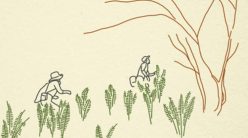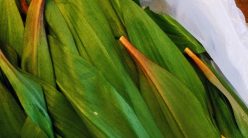
It’s the middle of June, and the elderberries are beginning to flower. This is the easiest time of year to find them!
The University of Minnesota extension office says:
The common or American elderberry is a shrub growing from 4 to 12 feet tall. It is found in moist soils along roadsides, ditches, streams, and in fields. It has creamy clusters of tiny star-shaped flowers that become round, purplish-black berries in late summer and early fall.
As you’re driving around, look by the side of the road and along forest edges for small trees or shrubs with the distinctive clusters of flowers. The picture above is one I discovered right next to the road near a wetland (those are cattails in the background, which are also edible), and one of my normal foraging areas is a carpet of white. The patches can occur anywhere — two of my spots are near wetlands, one is,near a railroad track, two are at abandoned farmsteads, and some are in county parks.
When you DO find your elderberry plants, mark them down so you can find them when the berries are ripe. Some options are to take a picture of the area with your digital camera and log it (being sure to include any landmarks), use a foraging app, or use Google maps (see: Using Google maps to mark your foraging spots to see how I do it).
Take care when harvesting elderberries, as some parts of the plant are poisonous and they frequently grow around plants like nettle (one of my favorite patches is intermingled). When they’re ripe, here’s how to easily harvest them. Once they’re picked, you can use them in a number of recipes or preserve them. Dried elderberries can be used to make an amazing immune system booster/cold and flu fighter that’s just honey, elderberries, and water.
Fun fact: If the flowers are picked early enough, they can be used to make Elderflower Cordial, a drink that goes back to the Roman Empire. The process starts by steeping the elderflower heads in a concentrated sugar solution and then it is refined further. The cordial is normally diluted with water before serving.
***
This article originally appeared at Examiner.com






